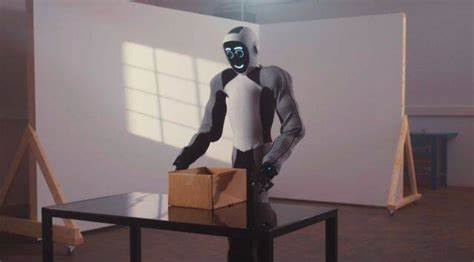OpenAI has been leading in AI-related developments globally. After the successful launch of the generative AI tool ChatGPT, now OpenAI-backed firm 1X has officially deployed the first humanoid in its workforce.
Sam Altman's OpenAI, which supports the robotics start-up 1X, has surpassed Elon Musk's Tesla in putting the first AI robot to work. According to reports, the EVE robot has been installed as a security guard at an Android manufacturing facility. Security and surveillance are reportedly being redefined by the robot.
Sophisticated Monitoring Systems
EVE is supported by sophisticated monitoring systems that include cameras, motion detectors, and alarm sensors. The most bizarre aspect of the robot is that if an android misbehaves, EVE may apparently enter its body and take control via virtual reality. According to media reports, EVE is surprisingly agile; the robot can open windows and doors, collect goods, and do a variety of human-like duties.

It has been reported that OpenAI is investing in the company to assist in the development of a new humanoid robot with legs. The AI powerhouse situated in San Francisco boasts the most powerful AI in the world. We're all aware of OpenAI's ChatGPT's incredible potential; now imagine OpenAI incorporating ChatGPT into a humanoid robot.
The latest discovery comes only days after Tesla unveiled Optimus, or Tesla Bot, its smart humanoid. There are various videos on the internet that demonstrate the capabilities of the robot produced by Elon Musk's firm.
The Tesla Bot was released in 2022 but was not added to the workforce. Recently videos of an improved Tesla Bot with more torque control and AI training from human-tracked actions surfaced on social media.
After this Canadian firm Sanctuary AI unveiled its humanoid Phoenix which is supposed to join the workforce. The AI-powered robot is capable of lifting objects up to 25 kg and the company demonstrated its capabilities by deploying it as a staff at a retail store.
The robot was seen performing tasks such as merchandise packing, tagging, and cleaning. While the future of robots taking over jobs seems inevitable, one needs to note that human intervention will not be eliminated entirely. Humans will be needed to add context, train, supervise, and more use cases as AI and robotics develop over time.









